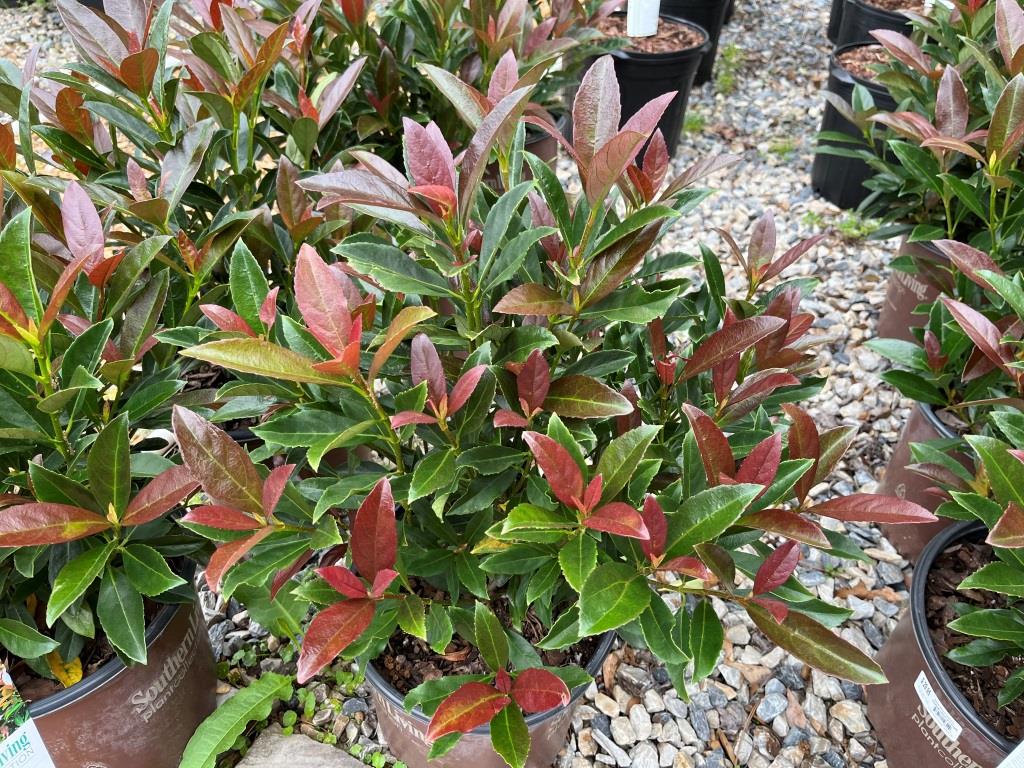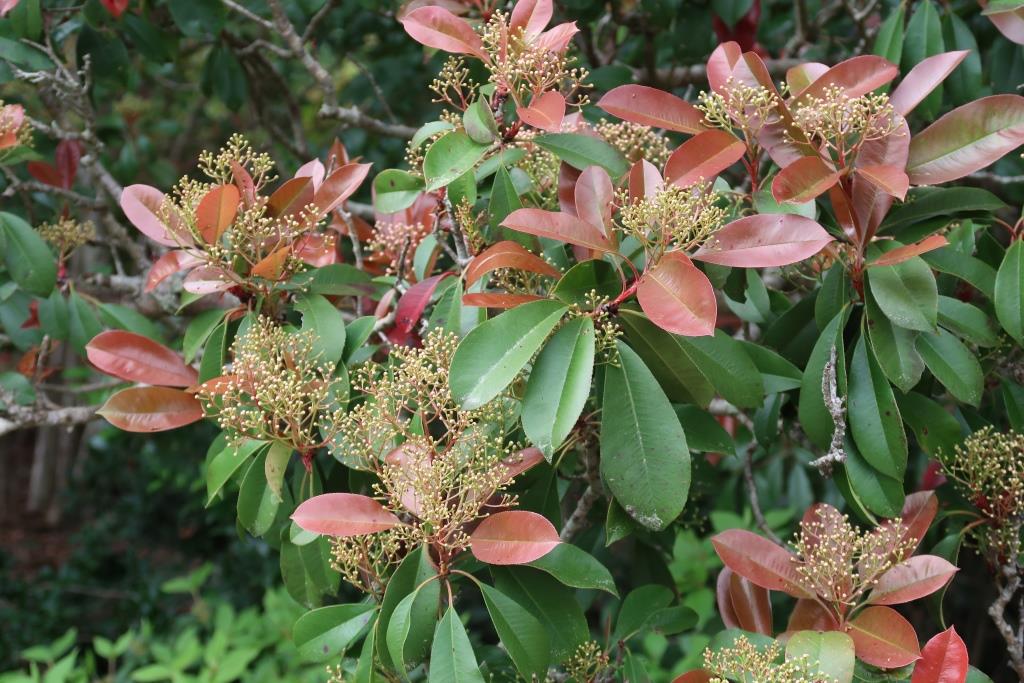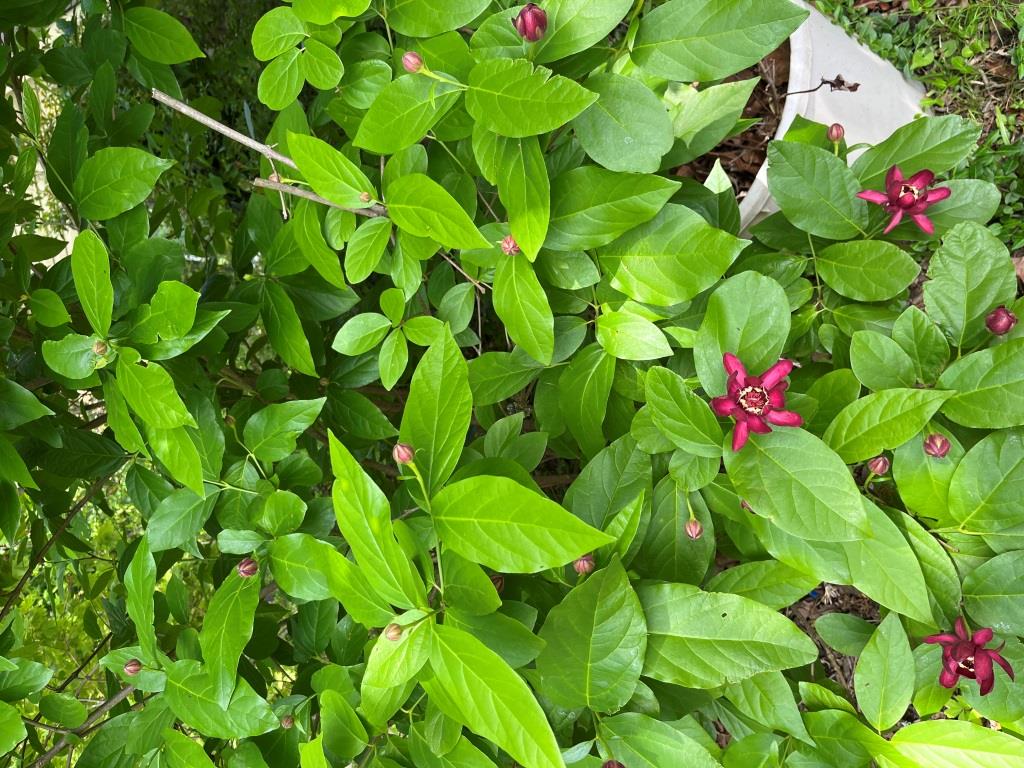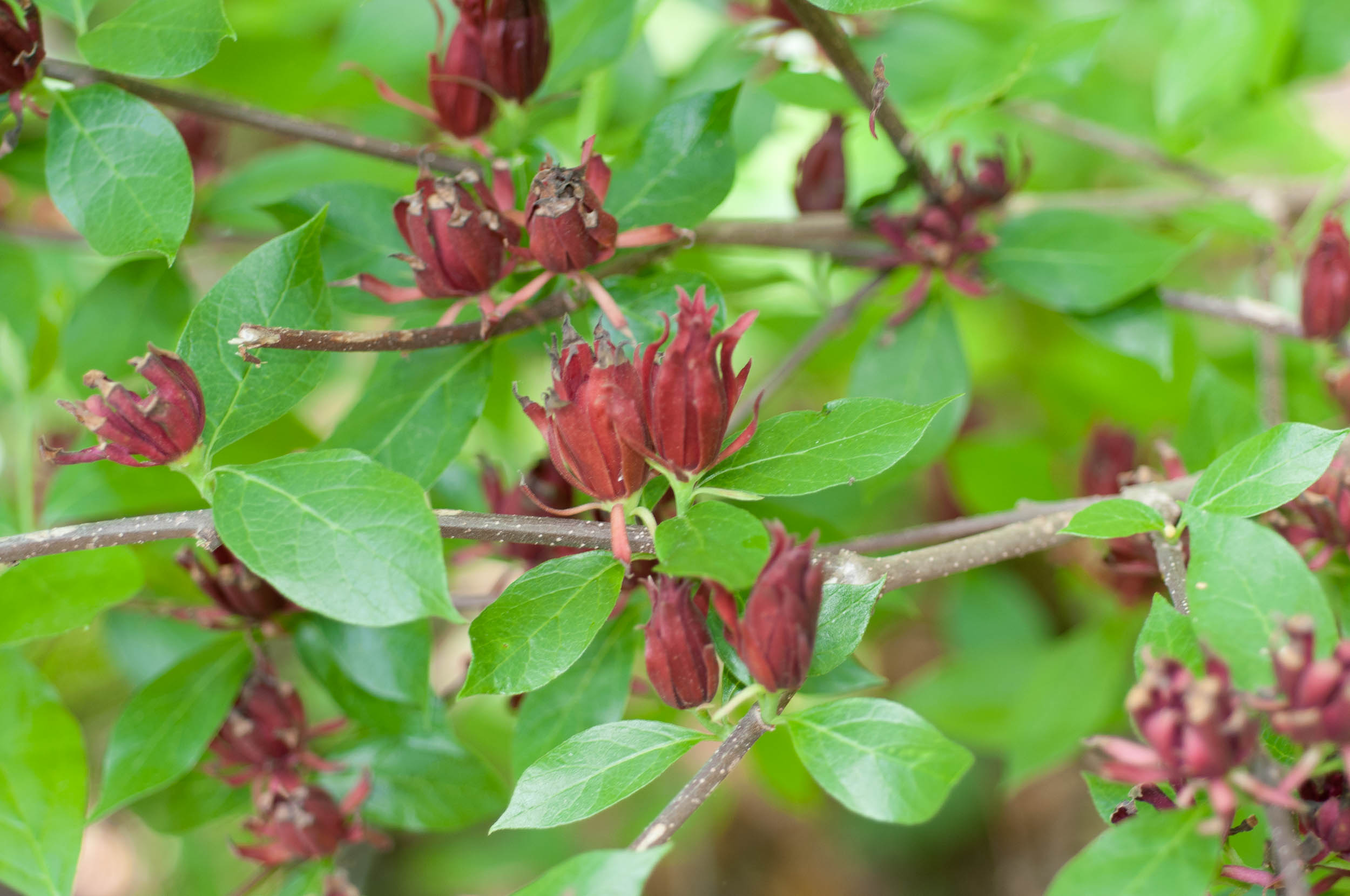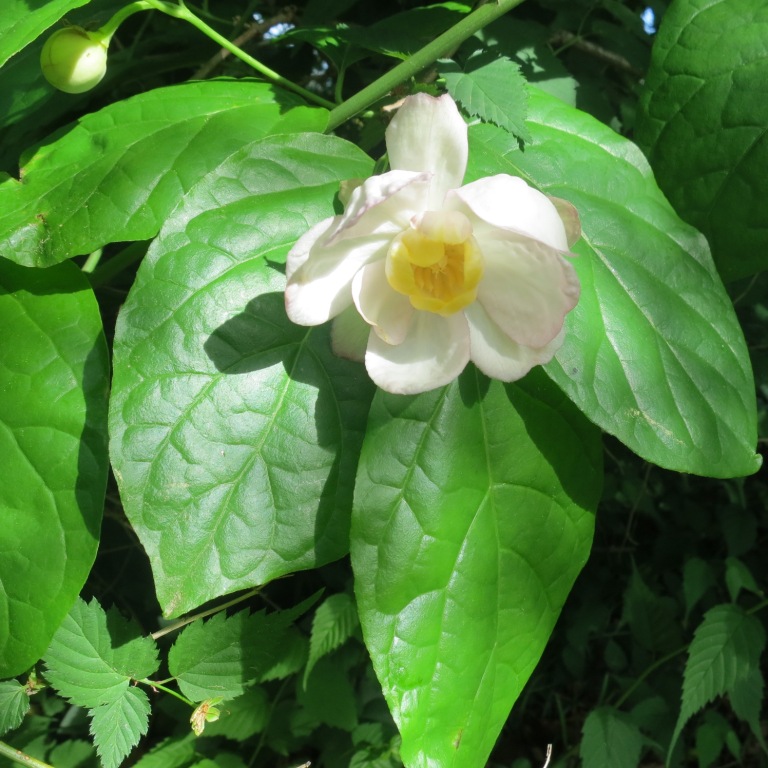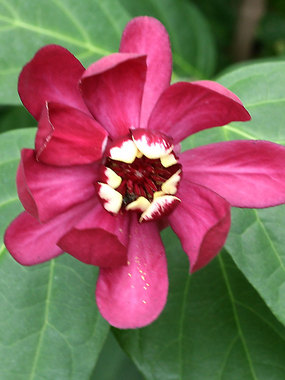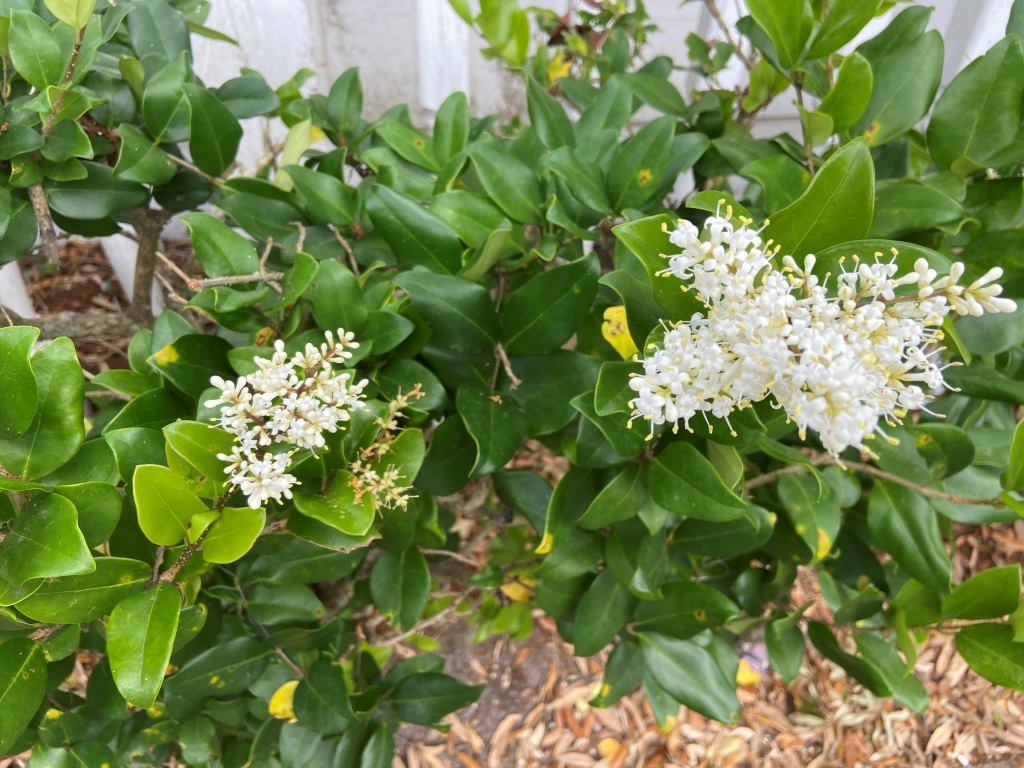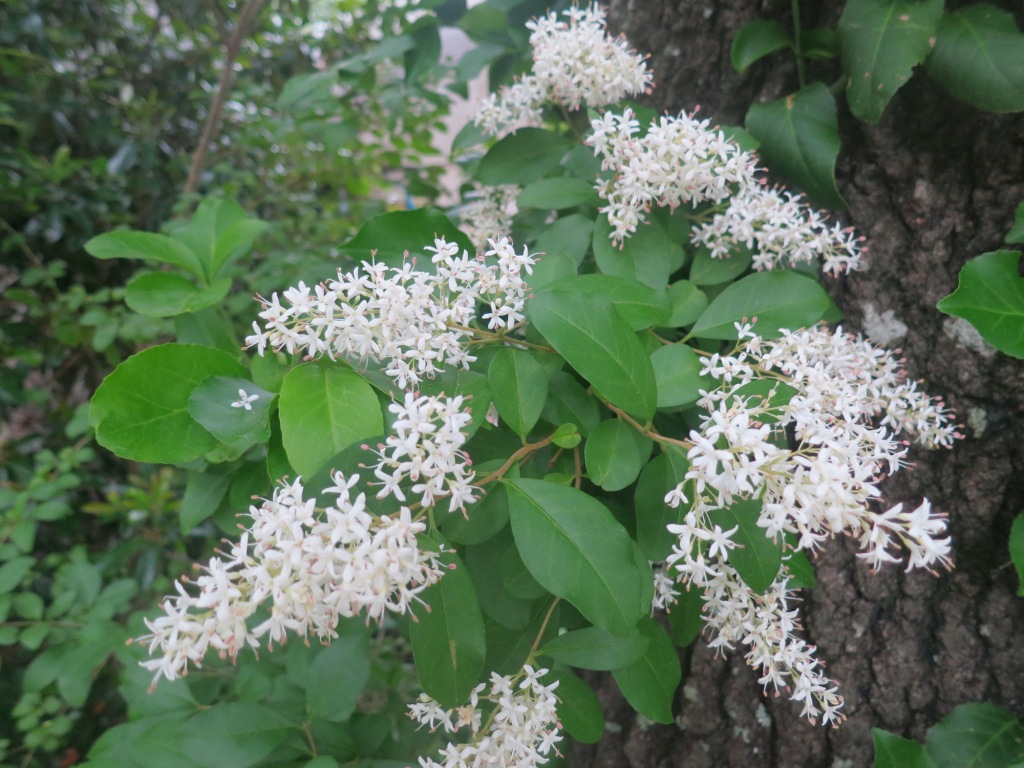Viburnum coppertop – Viburnum odoratissimum ‘Coppertop’ is a new Sweet Viburnum selection. I was at a local nursery and saw this plant from a distance, and thought, surely not—they are not selling redtop photinia.
Red top photinia was one of the most common hedge plants in the south for over 30 years, but a leaf spot disease has moved it into the don’t plant category. When I got closer to this plant, I could tell by the leaf margin that it wasn’t a photinia but a viburnum. The plant could be a great substitute for a red top, getting 8-10 feet tall at maturity and about 6 feet wide. It might be marginal in the northern tier of the state. More compact than most sweet viburnums, the new growth is a vibrant red color. It can grow in full sun to partial shade. Supposedly it has fragrant blooms, but I have not seen them yet.
Calycanthus ‘Aphrodite’-
'Aphrodite' is a hybrid between our native Calycanthus floridus
and the Asian species, xSinocalycanthus.
The flowers are almost twice the size of the native species, and bloom for a much longer time. In my garden, I will have blooms for up to 8 weeks or longer. Some say they have fragrance, but mine has none. It is a vigorous plant, and where I have it, I do prune it pretty heavily after it flowers.
Left unpruned it could reach 7 feet or more in height with a 6–8-foot spread. It blooms on new growth, so pruning after flowering doesn’t impact blooms at all. It is deciduous. It will grow in full sun, but in the south, I think full morning sun or dappled sunlight works well. When it is in bloom, everyone asks what it is—a stunning addition of color in my garden.
Wax leaf Ligustrum – Ligustrum japonicum
